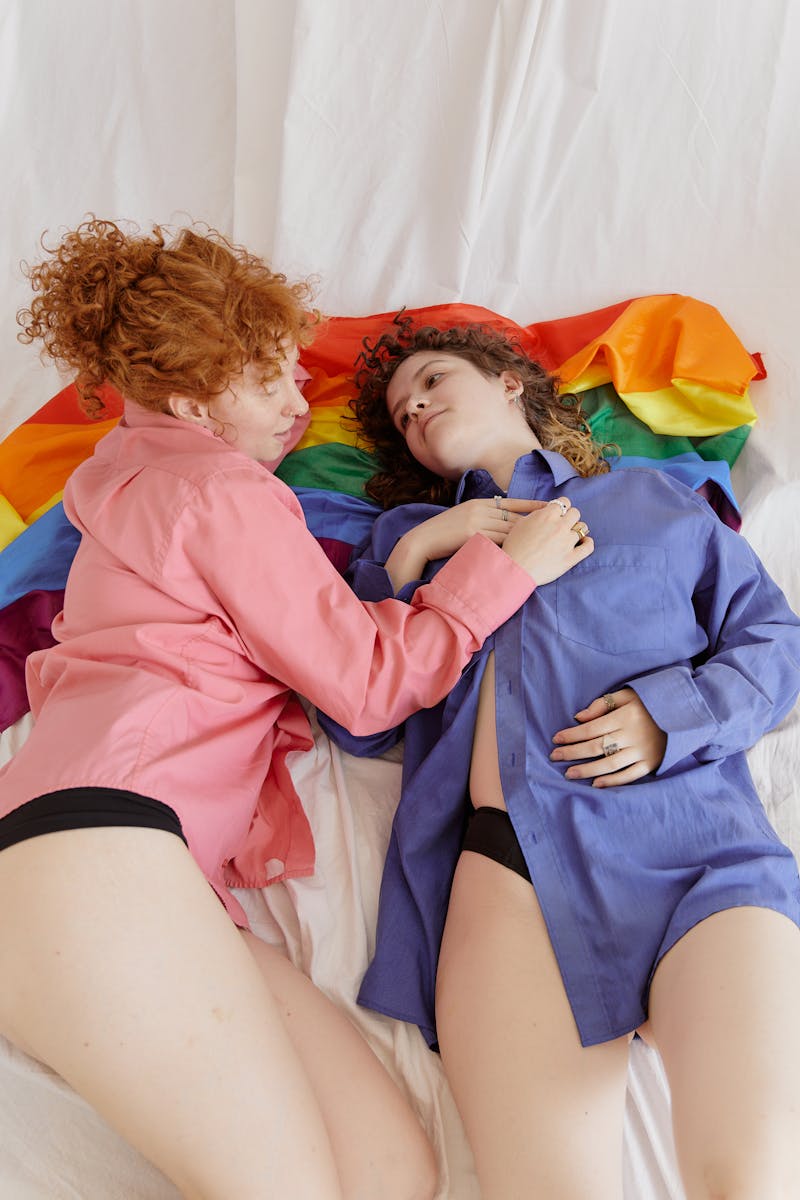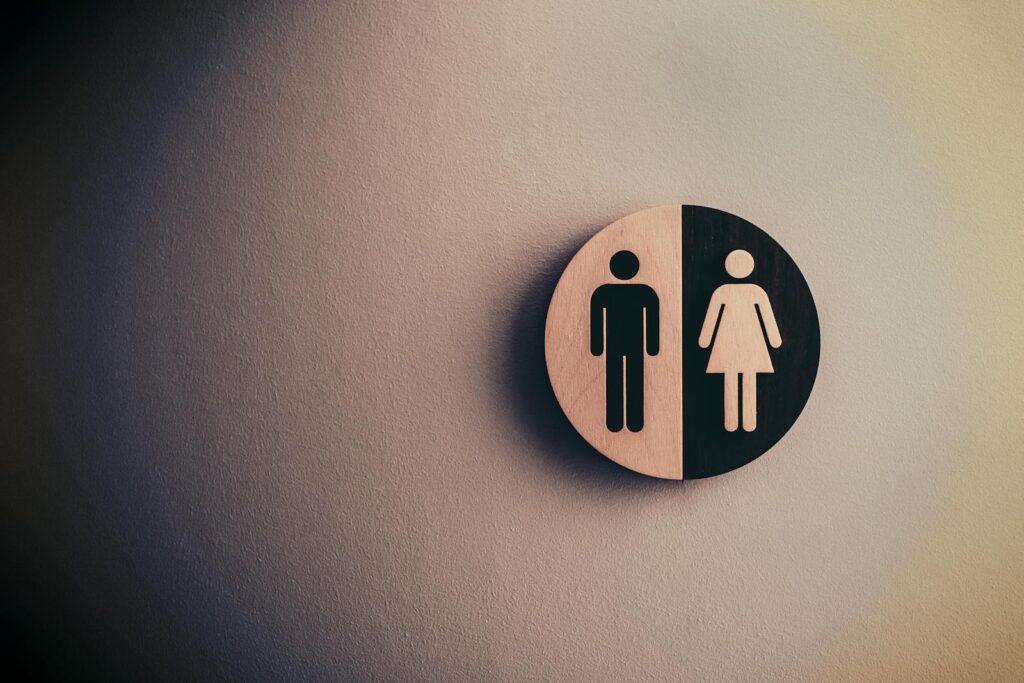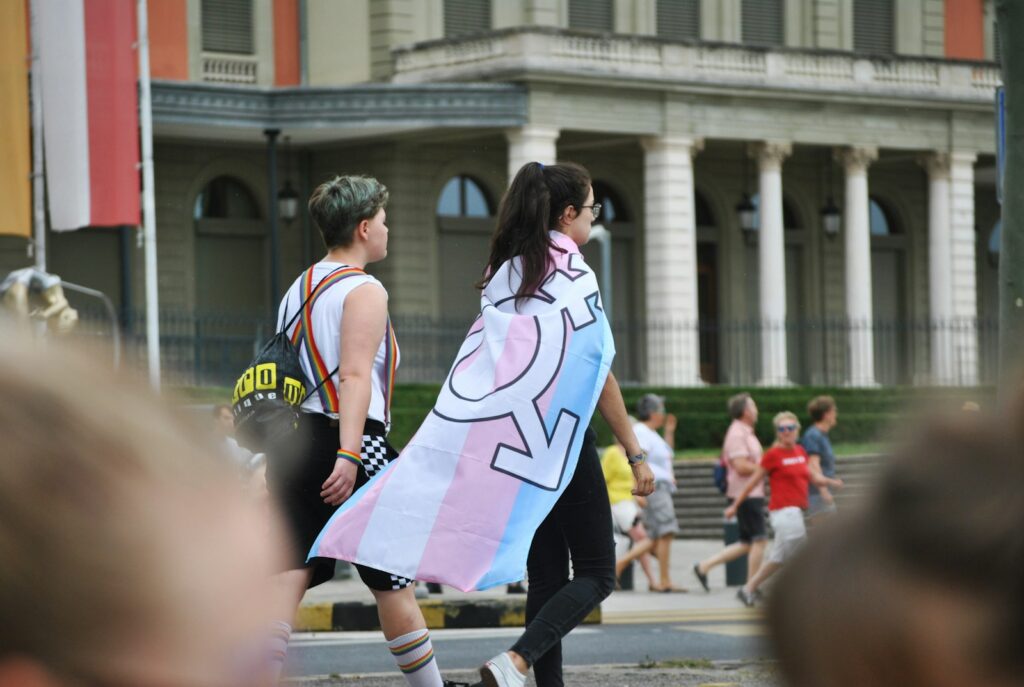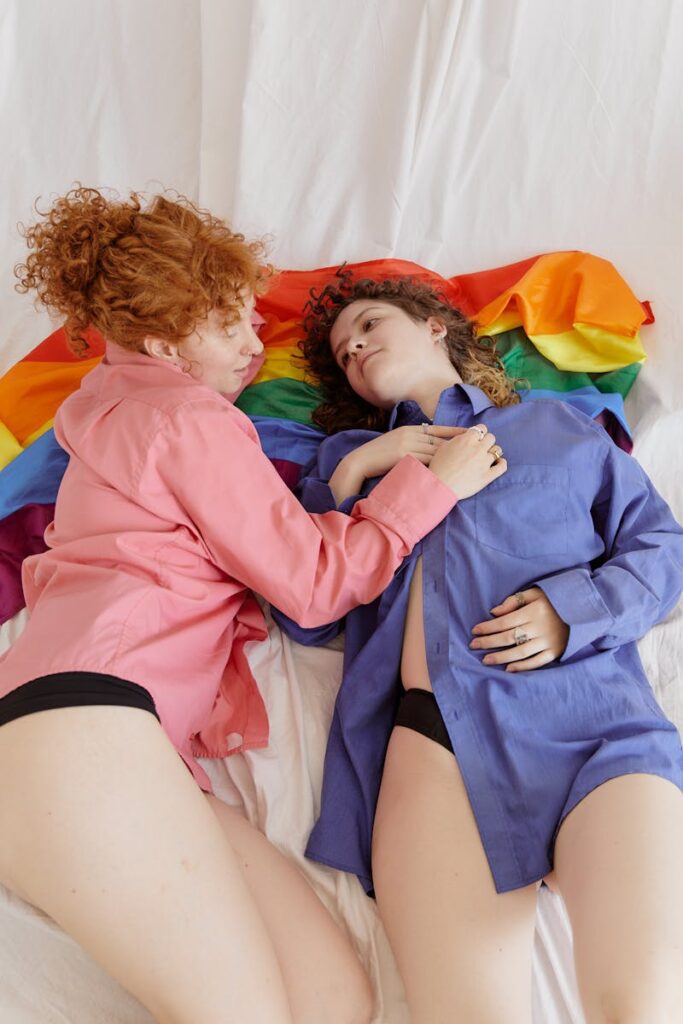As we strive for better inclusion in society, the importance of gender and sexuality debates increases, yet the misconceptions and over-simplifications regarding the issues remain. This article addresses some of the topics-what is the difference between sex and gender, what is a gender and sexuality spectrum, what is sexual orientation, the need to use proper language and tilt towards advocacy for LGBTQ+ rights. By including these diversities, we make the world a kinder and fairer place to live in.
Sex and sex orientation
The terms “sex” and “gender” however are used nearly identically and this is what creates confusion.
Sex
The biological makeup of an individual which pertains regardless of the environment and society; this includes chromosomes, hormones and reproductive organs, is what is termed sex. Intersex, male and female are the three categories of sex that now exist. These categories are assigned to people depending on their reproductive parts when they are born into the world. But, it is also necessary to know that not everybody would fall under these categories comfortably.
Gender
Gender and sex are not synonyms as some proponents of gender may claim, in fact gender encompasses more societal attitudes as well as behavioral patterns that are related however not defined by being male or female. Different societies have different perspectives towards gender. For example, there are societies that perceive only male and female genders, and there are societies who perceive male, female, transwoman, transman and other third genders and gender nonconforming individuals.
Key Features
Recognising the difference between sex and gender provides clarity and insight, in that one’s biological sex of being male or female does not necessarily determine one’s gender identity or social role. This clear understanding helps overturn generalization, and presents a better depiction of human variation.
The Gender and Sexuality Matrix
The postulation that there is a male/female gender division and that heterosexuality and homosexuality are the only sexual orientations has been refuted more often than not. There is so much more to human identity: it is rich and dynamic.
Genderqueer
Gender is not on the either/or split of male or female, but on a linear like spectrum that places male, female, and non-binary, genderqueer, and genderfluid, among others. There are those people who can be masculine and feminine, whilst others fit neither.
Asexual Spectrum
Just as gender, there also exists a spectrum for sexuality. There are heterosexuals, homosexuals among many others including bisexuals thus more common the widely accepted terms romantic attraction, sexual attraction and pansexual. This is the first step to cut down on bigotry arising out of general misinformed people who claim that love or freedom are finite resources.
Moving Beyond the Gender Binary
The view that society has of an ideal man and an ideal woman is an artificial construct. True pluralism necessitates appreciation for everyone, no matter where they fit on the spectrum; this includes respect for their complex identities.
Comprehending Sexual Orientation
Sexual orientation is the last point of affection in any gender spectrum between females and males. It is a fundamental aspect of an individual and therefore warrants the need to learn and know its characteristics.
FOR ADULTS ONLY
Types
Heterosexual: The Opposite Gender Affection
Homosexual: Same Gender Affection
Bisexual: Children of One or more Than One Gender or Sex.
Pansexual: There is no regard whatsoever for a person’s gender in terms of lust.
Asexual: There exists small or no interest in bearing offspring or mating with any person.
The change in the orientation
Sexual orientation may change over the course of a lifetime. For example, someone who identifies as bisexual during a period of their life may later decide that they are pansexual. This change in orientation showcases a part in how complex relationships and the acceptance of oneself is.
Debunking some of the myths associated to gender and sexualities
Many myths about gender and sexuality persist in spite of increased understanding about the topic over the years.
Myth 1: Sex And Gender Is The Same Thing
This misconception puts together socieetal roles with biological traits overlooking the different experiences of gender.
Myth 2: Non-Binary Identities Are Just A Phase
Non-binary and third-gender have existed in different cultures and eras from hijra societies in South Asia to two-spirit identities of Indigenous Americans.
Myth 3: I Can Choose Whom To Be Attracted To
Part of a leading scientific study is that underpinning, one’s sexual orientation is fixed and not something that is chosen Reconstruction of such fallacy forms the basis of stigma and discrimination.
 + People Are ‘Confused Or In Phases” Is A Myth
+ People Are ‘Confused Or In Phases” Is A Myth
No one who is gay is “confused,” and branding their sexual orientation that way seems to ignore their life experiences. It is critical, in this context, to note that a question of an identity in itself is a form of a violence, and experience precedes it.
Outreach
Language has a huge impact on how we see and approach issues. Therefore, for one to be treated with the dignity they deserve, many aspects of language must change.
Why the use of pronouns is essential
Words like he/him, she/her, or they/them are widely appreciated by many when identified. This is because the belief held is that pronouns convey self-affirmation and make one feel part of the community.
Pronoun Usage for the Gender-Sensitive Language
Such use refrains from making gender-specific pronouns too much like men or women. For instance, “partner” instead of girlfriend/boyfriend and “they” is a good example.
The Importance of Information and Communication Technologies and Education
Creating awareness on such issues regarding inclusivity begins with education, and this requires a paradigm shift in institutions and workplaces. People with similar objectives should be able to offend less inadvertently.
Non-Binary Concept
A missed opportunity of gender transition is not being a man or a woman. In fact, many cultures and people counter these assumptions.
Non-Binary Gender Identity
Non-binary people do not see themselves merely as a man or a woman, but as roboys. The concept often finds expression in one or more genders, or gender fluidity, or in absence of it.
Other Gender-Identifying Cultural Views
Hijras (South Asia): Apart from males and females, this category has been part of South Asian societies for hundreds of years.
Two-Spirit (Indigenous Cultures): Term drücken some North American native tribes who can be ‘masculine and feminine’ at the same time.
Fa’afafine (Samoa): This is a people who are considered to be of a different gender but play a significant part in the Samoan culture.
Gender Fluidity
Some individuals relate themselves to the ‘fluid gender’ theory such that their identity as a woman or a man changes. This reminds us that gender is always about the person and is never static.
The Intersectionality of Gender and Sexuality
She can study how different categories like race, gender. and class discrimination can reinforce or alleviate the impact of other forms of discrimination that an individual may face.
Intersectionality in LGBTQ+ Communities
LGBTQ+ communities who are also people of color have to deal with additional barriers like anti-black racism in queer communities or homophobia in their racial communities which is more of an intersection approach to focus on.
Economic and Social Disparities
Often transgender and non-binary are unemployed most of the time. Exhibiting such discrimination in the healthcare sector tends to shift approach that emphasizing disparities.
Supporting and Advocating for LGBTQ+ Rights
For a society that aims toward equality, it a must for all of its members to advocate and protect the rights of LGBTQ+ individuals. Change starts with everyone.
Legal Protections
So that LGBTQ+ individuals can be free, marry their partners and have access to healthcare without being discriminated against, efforts for attaining anti-discrimination laws should push forward.
Community Support
LGBTQ+ people need allies, so this is why it’s important to listen to them and educate themself, and fight against any form of discrimination.
Raising Awareness
Telling stories and supporting pride months, and assisting the community in their education can help alleviate stereotypes and instill acceptance.
Conclusion: Diversity as strength and acceptance as norm
Sex and Gender are interlinked in complex ways as part of a self. Only when sex and gender are differentiated, and various identities are recognized and myths are debunked, will it be possible for a society to appreciate diversity. From using language that is inclusive to understanding different nuances and busying themselves in true activism- all of these have one goal: to create a space where oppression is scarce.
To aid and advocate for these paradoxes is the center of compassion and the pathway to a utopian society for all. Let’s make a promise that we would seek, learn and promote acceptance in every sphere of life.
FAQ’S
1. What is the distinction between sex and gender?
According to the definition, sex is the classification of the reproductive system and other biological attributes like chromosomes as male, female, or intersex. Gender, on the other hand, is a sociological phenomenon encompassing roles, behaviors, and identities that are perceived by society to be male, female or otherwise. Gender is more culture based, so it is not strictly borne out of biological factors.. A person’s sense of their own gender may not reflect their sex assigned at birth. This distinction is key in understanding how gender is different from sex and plausibly why the difference is important in addressing the public’s misconceptions on the topic and addressing stereotypes and promoting acceptance of other genders.
2. What does it mean that gender and sexuality are on a spectrum?
To put it simply, not all individuals can fit the definition of a man or a woman and, by extension, not all can be strictly heterosexual or strictly homosexual, so say some advocates a spectrum exists. As an example, someone could identify as male at one point in time and female at another, or they could be both or neither the markers of gender. This understanding of gender prevents defining someone as strictly one thing, allowing their identity to shift as time goes on.
3. What does sexual orientation mean?
The term sexual orientation is defined as the romantic or sexual attraction that a person has towards another person. It can be towards opposite sex (heterosexual), same sex (homosexual), both sexes (bisexual), or towards a person irrespective of their gender identity (pansexual). There can be asexual people who consider themselves to have little or no attraction sexually to other people. Orientation is a basic feature of a person that does stay constant across their life, yet it may at times also change, which underlines both why people’s feelings and relationships are complicated. In this case orientation relates to encouraging respect towards a variety of relationships and accepting the LGBTQ+ spectrum.
4. Why is the use of gender-neutral language and pronouns so important?
The use of gender-neutral language and fair pronouns are critical to affirming people’s identity. Pronouns such as He, She and They are pronouns someone uses for himself. If anymore later gives someone’s pronouns, they use those expecting respect for their identity. It is of great relevance considering a lot of people are discriminated by others because of their gender. It helps to eliminate gender bias and allows the person to present themselves as they want not something that fits into a box. It helps in creating a more loving and welcoming environment where everyone has a sense of purpose.
5. Which gender and sexuality misconceptions specifically dominate?
Some people might think that sex and gender are one and the same, simply put, they can also think that being non-binary is a recent concept or trend. To be clear, gender is not the same as sex and in fact, many non-binary identities have existed in many cultures throughout history. As well, there’s a misconception that having a sexual orientation is bestowed upon one’s character when this is false. Sexual orientation appears to be an intrinsic component of a person. It is also common to think about the LGBTQ+ community as going through a phase, if not confused, but they are just like any of us and their identities are equally valid. So, debunking these myths must be embraced so as to promote acceptance.
6. Being non-binary means ,what exactly?
A non-binary person is one that does not exclusively see themselves as female or male. They may consider themselves as a mix of both, don’t consider themselves as any gender or are fluid in gender. Non-binary, genderqueer and genderfluid are all gender identities that come under the banner of being non-binary. Non-binary persons include those who don’t accept the notion that there can only be two genders, male and female, arguing that gender is fluid and based on individual perspectives. One way of achieving this is by adopting their desired name and pronouns which help to reinforce their experience and supports their self-definition.
7. Why is intersectionality important in regard to gender and sexuality?
Intersectionality explores how various identities such as race, class, gender or sexuality can lead to different experiences of discrimination or privilege. Discrimination against LGBTQ+ individuals may overlap with racism or homophobia for members of this community who are black or belong to other ethnic minorities. Therefore, intersectionality assists in comprehension of such distinctive difficulties and the requirements of diverse marginalized population. Institutions can focus at people’s specific vulnerabilities and create better policies and programs to assist them when they face discrimination of more than one kind.
8. What can I do to help LGBTQ+ rights and people?
To support people in the LGBTQ+ community, one has to fight for their rights which means advocating against discrimination, using appropriate terminologies and respecting the identification of an individual. One becomes an ally of the LGBTQ+ community by learning more about issues facing the community and practicing solidarity against discrimination. Such allies are even encouraged to share stories, join in pride parades or assist in activities for LGBTQ+ rights. They assist in transforming the law and push for legal protection, access to health care, and protection in workplaces so that everyone is nourished in a protective and welcoming atmosphere.
9. What does ‘gender fluid’ mean?
The term gender fluid denotes the gender identity that is not permanent and might be in a state of flux. A person who is gender fluid might one day feel masculine, another, feminine or might even fall outside the male and female parameters. We could easily think of gender as a spectrum rather than all feminine or all masculine. This is also an expression of someone’s sense of self and how they feel about their gender. In a way, gender fluidity helps in combating the two dimensional sense of male or female gender that society has ingrained within itself. Instead, male, female, or gender fluid feel free in the way they wish to define themselves, constructing a more open society.
10. Why is it significant to comprehend that sex and gender are two distinct concepts?
Segregating sex (biological attributes) from gender (Social construct of identity) also helps in avoiding such stereotypes as developing understanding about society and its people. It reduces discrimination from society towards those people who do not fall under the sex they were assigned at birth such as transgender or non-binary. It is and should be a society where rather than confining to a stereotype or set of beliefs, one is free to express themselves without the fear of being judged. Such perspectives are important while dealing with discrimination against gender or any form of discrimination for that matter as it ensures everyone is given the due respect and honor.




